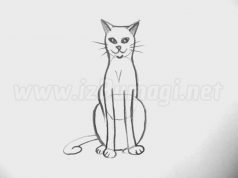A drawing that simulates movement is a little more complex than a static image, but also more interesting to execute. Asymmetry and perspective enhance the sense of movement.
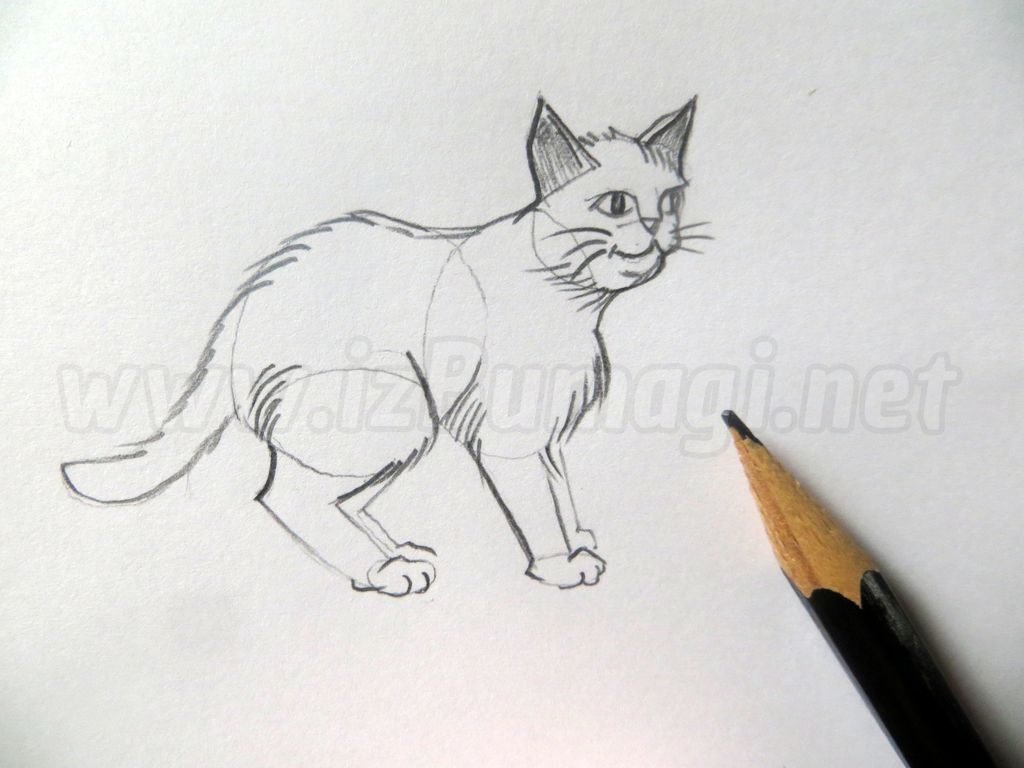
Step-by-step creation of a pencil drawing:
The first outlines of the sketch resemble an active caterpillar of three circles: from the large lower circle we derive the middle one, slightly smaller and higher; from the middle one - even smaller and even higher.
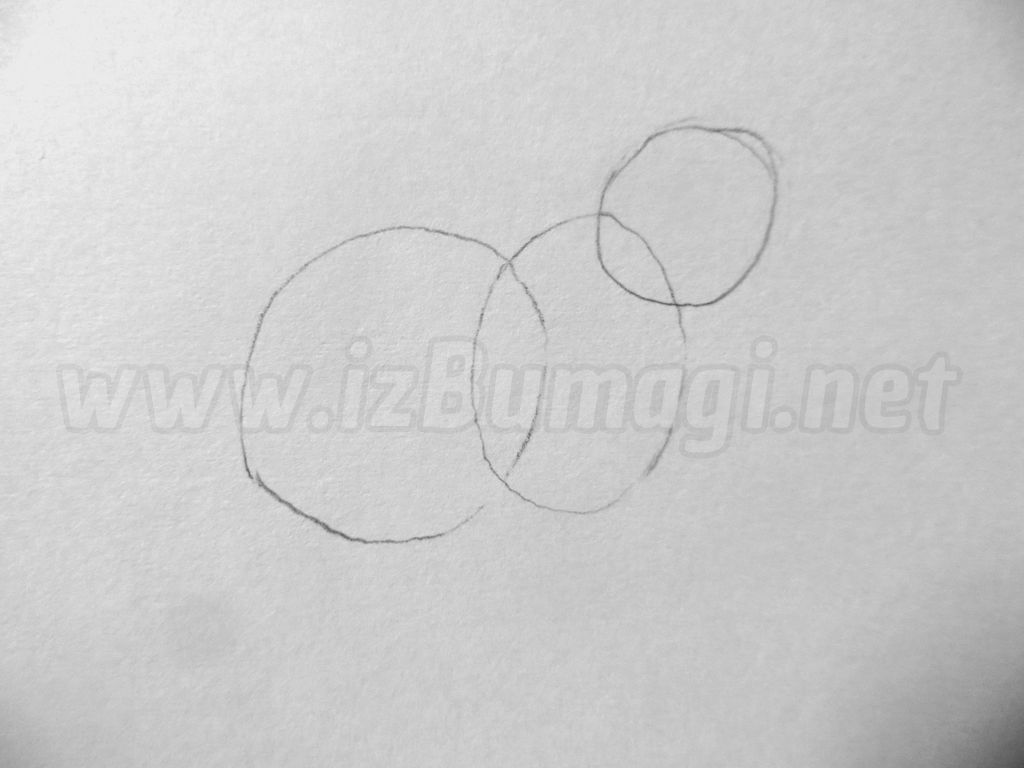
Add sharp triangular ears. Draw a sketch of the future neck, long front paws (going from the middle of the oval to the toes), mark the location of the long, rounded tail.
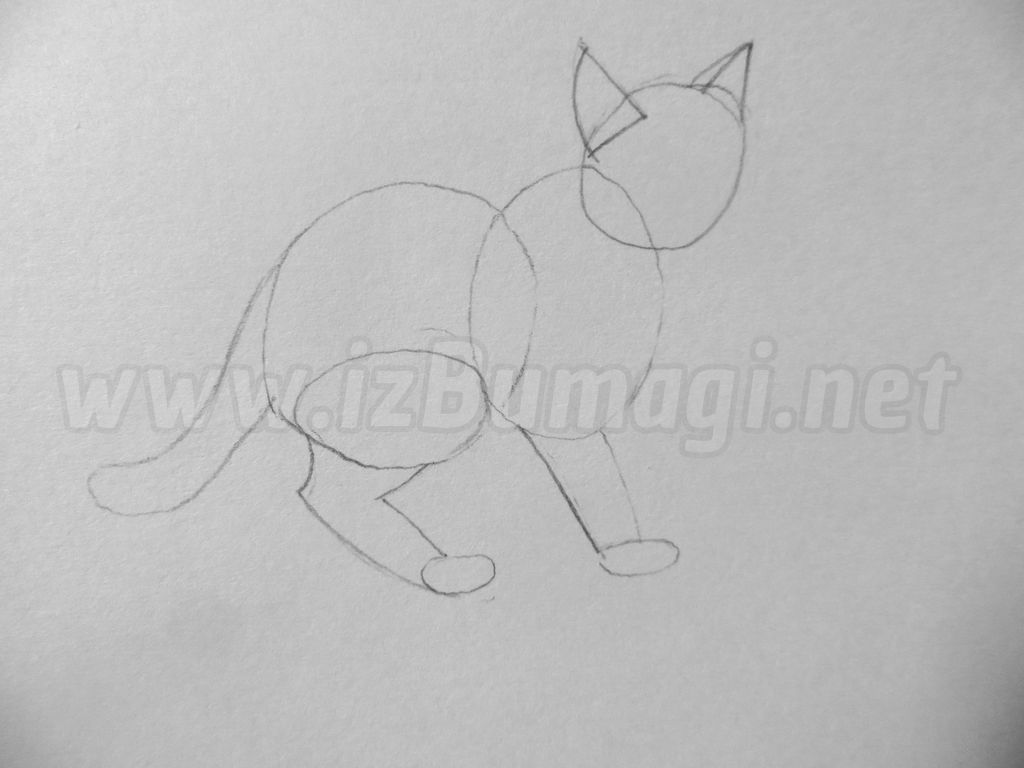
We add characteristic cat elements: triangular ears, fluffy tail, slightly bent paws with socks.
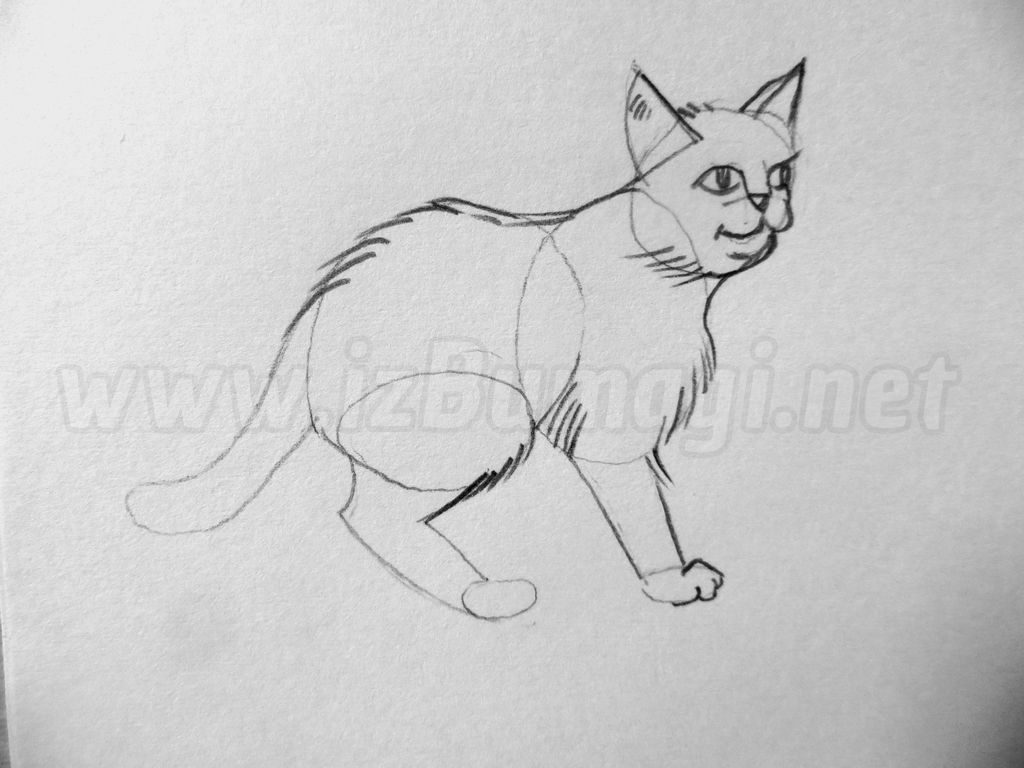
Draw parts of the face. The dynamism of the drawing is given by the half-turn of the head. Therefore, we see only one eye completely, the second one is shown only halfway, and it is important to position the pupils correctly. The nose and mouth are also shifted to the edge.
Next, add fluffiness and shagginess by lightly drawing the fur with random strokes.
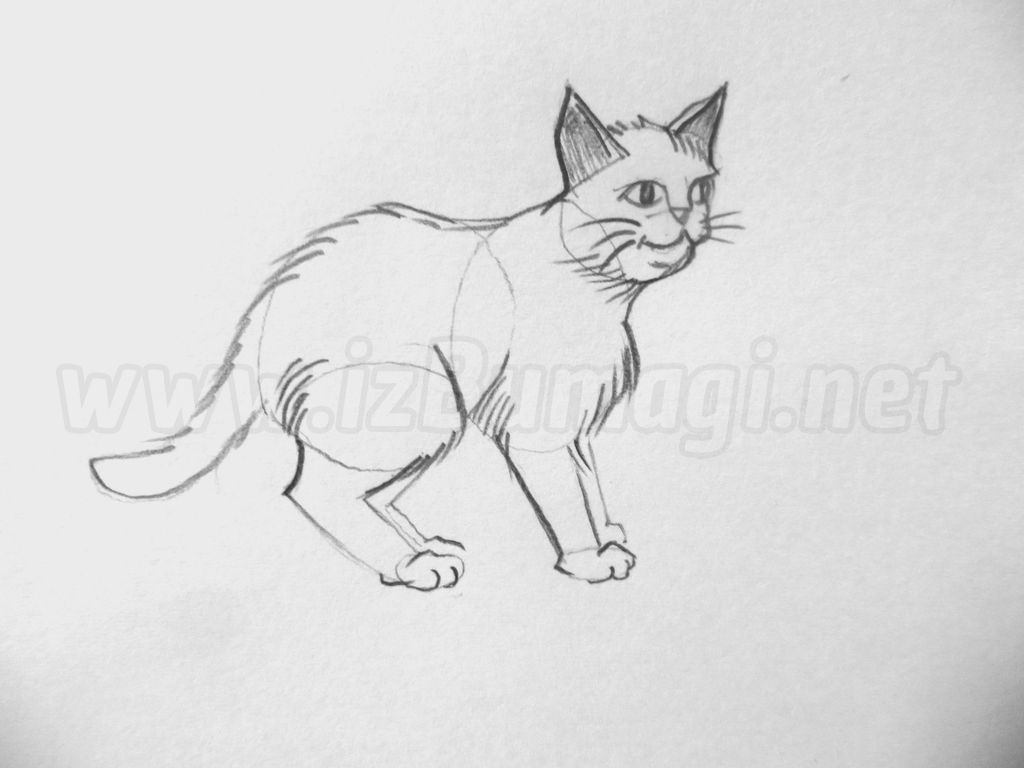
Give the image beautiful volume and elements of perspective:
Darken part of the ears.
Outline the mustache.
Draw the paws of the second plan - they are visually smaller in size and less sharp in contour.
The cat crouched slightly and perked its ears, as if preparing to jump. The illusion of movement can bring even a painted cat to life.




